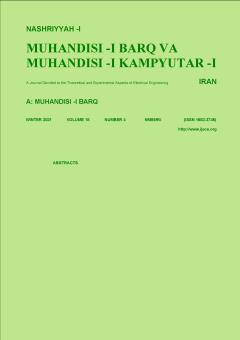-
-
List of Articles
-
Open Access Article
1 - Feed Locating and Beamforming in Collocated MIMO Antenna Using Characteristic Mode Theory
Mostafa Parvin J. ahmadi-Shokouh Hamideh DashtiKhavidaki -
Open Access Article
2 - Reduction of Magnetic Core Losses in Forward Converter for Driving Magnetron Lamp
Mohamad Reza Banaei ابوالفضل نصیری -
Open Access Article
3 - Reactive Power Compensation using optimal capacitor allocation in the Distribution Network in the Presence of Wind Power Plant Based on Information Gap Decision Theory
M. Ramezani mahboobeh etemadizadeh -
Open Access Article
4 - Hybrid Beamforming in MIMO Systems via Matrix Decomposition
-
Open Access Article
5 - Distributed Control Scheme Based on Model Predictive Control for Supplying Power in an Isolated DC Microgrid
Arash Abedi Behrooz Rezaie Alireza Khosravi مجید شهابی -
Open Access Article
6 - Investigating the Influence of Number of Carbon Atoms Along the Width of Graphene Nanoribbon on the current of a Graphene Single Electron Transistor
D. Dideban Vahideh Khademhosseini -
Open Access Article
7 - Sum Rate and Energy Efficiency Maximization in a Cognitive Radio Network with a Successive Relay Primary User
elahe maddah Mohammad lari -
Open Access Article
8 - Angle Robust Reflective Subtractive Color Filter Using Titanium Dioxide Metasurface and Aluminum Mirrors
Zahra Nasehi
-
The rights to this website are owned by the Raimag Press Management System.
Copyright © 2017-2025







